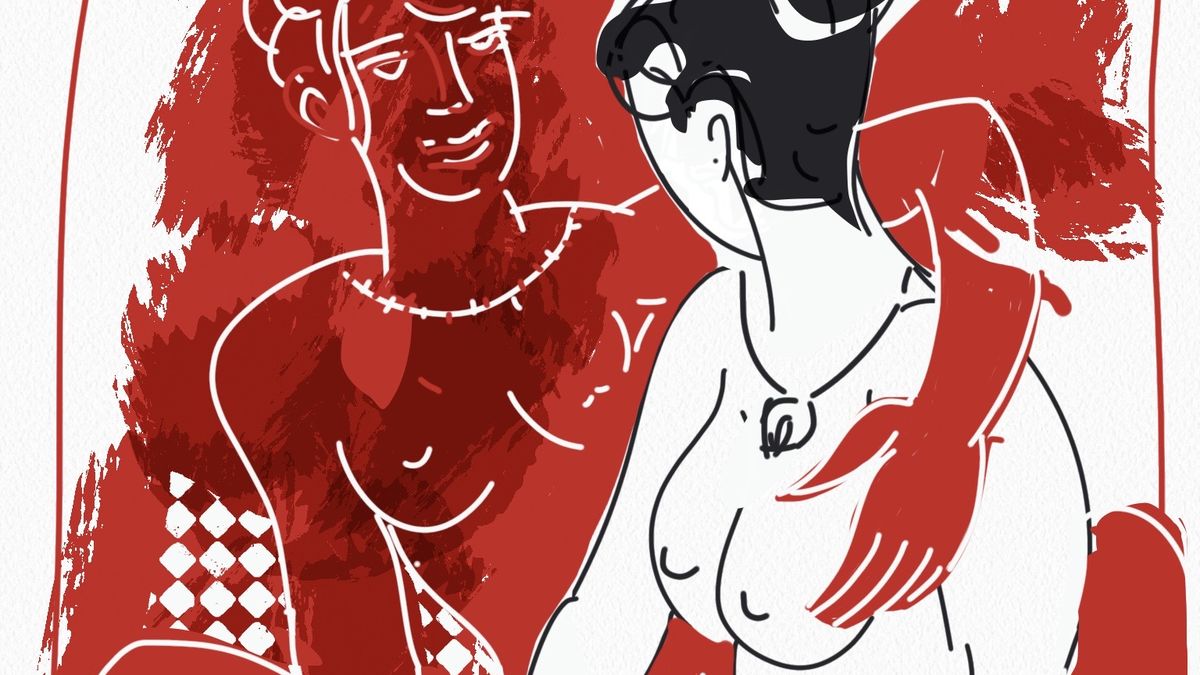Ernesto Pesce (Buenos Aires, 1943) He has just presented at the National Museum of Fine Arts his book “Erotica-1974-2023”Spanish-English bilingual edition, with the auspices of patronage cultural participation, and introductory text of Julio Sánchez Baroni.
Since the 70s, Pesce Explore this theme that appears explicitly in Egyptian vessels, Greek amphorae in its multiple variants, and throughout the history of both Western and Eastern art.
In this volume there is a selection of lithographs, collages, color pencil, ink of its beginnings, a journey of 11 chapters “Erotic”1974/1989, “Street girls” 2003, “Erotica”2007/2013, “Cain and Abel”2010/2023,“The House of Sleep Beauties” 2012, “Erotic with sculptors “ 2021, until you reach “Digital erotic” 2014/2023, a device that, in your words, allows you to work directly on the screen “because I do not like to hold on to a style or a discipline.”
Julio Sánchez Baroni It refers among other items to his early work related to a classic, naturalistic drawing. Later “The street girls” They are drawn on sheets of the Filcar guide, today replaced by Google Maps.
Pesce confesses that “You have to maintain eroticism until the end of life. I avoid obvious and chabacanería. I am interested in eroticism because it still bothers, perhaps the religious burden, and even those who have a higher education demonstrate their prejudices. These inhibit desire but eroticism is very beautiful and can be extended throughout life”.
The refined lithographs, the exquisite pencil color and ink of page 25 as well as the orientalism of “street girls”, very elaborate, baroque, the work done in watercolor and ink s/paper of the period 2007/2013. In the watercolor and ink series s/ paper “Cain and Abel”the funds are complex, animals, snakes, geometizing lines, tree leaves appear and reveals the enmity of this example of fraraticide.
Nor are the constellations of his cosmic series initiated in 1990 in which at the time we refer to his rigor and subtlety, his goldsmith drawing.
Returning to “Erotica”the relationship of Pesce With the East, tattooed dragons on the bare bodies, hexagrams of the I Ching. “The House of Sleeping Beauties”It is inspired by the work of Iasunari Kawabata (1898-1972) Nobel Prize for Literature, Inks and Watercolors S/Paper: The protagonist, an older man who frequents a inn but does not have physical contact with the women of the place, only looks at them, and his fantasy is guessed.
Among the chapters of the book is “Erotic with sculptors”, closely related to “Shared work”, Book published in 2021 that includes the work of prominent sculptors, including, Jorge Gamarra, Lucía Pacenza, Dora Isdatne, Hernán Dompé, Bastón Díaz
This book reminds us of a constant topic in the work of Pablo Picasso that from his first works he showed his contact with sexuality and that he saw himself in all his times. The lovers, the kiss, the hug, the exhibition of explicit sexual relations, the brothel, were provocative expressions that expressed the passion that ruled their life, in addition to being a great collector of Japanese erotic works of the nineteenth century.
Ernesto Pesce Awards began in 1971, including the 1977 Grand Prix of Honor of the National Hall, the Marcelo de Ridder, also in 1977. He participated in the II Biennial of Havana, in 1989 he obtained an honorable mention in the V Ibero -American Art Biennial in Mexico.
Next to Berni, Alonso, Seguí, Páez He presented at the Banco Patricios de Graphic Foundation. Germany, Korea, Tokyo, Cairo, New York have exhibited their works.
Source: Ambito
I am an author and journalist who has worked in the entertainment industry for over a decade. I currently work as a news editor at a major news website, and my focus is on covering the latest trends in entertainment. I also write occasional pieces for other outlets, and have authored two books about the entertainment industry.




